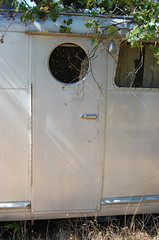Structural therapy model is usually designed to brief. It usually takes less than 10 sessions. Structural therapy model is meant to create a transformative change in the ‘now’. It is not interested in insight, feelings, and beliefs of the past of the client. Under this model, the position taken therapist is that family usually has all the resources that are required to deal with any problem facing the family but it becomes difficult to do so owing to its current structure (Hecker & Wetcher, 2003). Structural therapy has clear cut ideas on what mainly constitute a healthy family with clear boundaries and no coalitions. Under this model, therapist is very directive and is interested in family’s goals although they have their own goals of restructuring the family. This model may be used when the therapist want to asses family within a short period of time. The major advantage of this model is that it can produce positive results very quickly. It is also considered very effective with extremely pathological families. It is very directive and provides therapist with many opportunities. One of the major limitations of this model is that it can be too hierarchical for some families.
Milan Systemic Family Therapy
Like Structural therapy model, Milan-Systemic model also sees the family as self-regulating system that controls itself as per the rules formed over a great period of time. However, this is mainly accomplished through process of trial and error (Mackinnon, 2004). Therapists are usually interested in rule-maintaining characteristics of communication and behaviors.
They assume that the best way to eliminate a symptom is through changing the rules. Unlike Structural therapy model, this model delves in interviewing the family. The interview mainly consists of questioning the family by the therapist. This is a recursive and circular process and each question builds upon the family response to the previously asked questions. More emphasis is mainly placed on exploring the differences existing in behaviors of the family members, emotional responses and beliefs at any different point in time. This model may be used when the therapy wishes to take time to asses the family, especially looking at behavior and emotional differences between members of the family. Major strengths of this model is that it strengths communication and behavior control of the family, a key ingredient in therapeutic process. However, it is limited in the fact that it depends on trial and error in establishing rules for the family.
The author is associated with Research Paper Writing Services. The author will assist you with Best Research Papers.
Find More Aircraft Structural Design Articles




